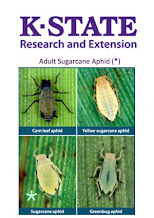Choosing the Best Christmas Tree
Cassie
Homan,
Horticulture Agent
 Another common use is to simply cut the tree up for wood. Let it
dry for a few weeks, and you will have some easy lighting firewood. Just beware
that most conifer species tend to spark and pop more than hardwoods, as resin
pockets in the wood make tiny explosions. This can delight the youngsters, but
for safety's sake, keep an eye on the fire when burning Christmas tree logs!
Another common use is to simply cut the tree up for wood. Let it
dry for a few weeks, and you will have some easy lighting firewood. Just beware
that most conifer species tend to spark and pop more than hardwoods, as resin
pockets in the wood make tiny explosions. This can delight the youngsters, but
for safety's sake, keep an eye on the fire when burning Christmas tree logs!
Christmas is just around the corner! Now is a perfect time to pick
out your fresh cut Christmas Tree. Fresh cut trees are such a fun tradition and
will have your house smelling like the holidays all season long. If you have
never chosen a real Christmas Tree here are some great tips on what to look
for.
- Needles are a dull, grayish-green color
- Needles feel stiff and brittle
- Needles pull easily off tree
- Needles fail to ooze pitch (sticky substance) when broken apart and squeezed
Once you have your tree home, recut the trunk about one inch above
the original cut. This will open up clogged, water-conducting tissues.
Immediately place the trunk in warm water.
Locate the tree in as cool a spot as possible. Avoid areas near
fireplaces, wood-burning stoves and heat ducts as the heat will result in
excess water loss. Make sure the reservoir stays filled. If the reservoir loses
enough water that the bottom of the trunk is exposed, the trunk will need to be
recut. Adding aspirin, copper pennies, pop, sugar and bleach to the water
reservoir have not been shown to prolong the life of a tree.
If you choose a living Christmas tree, be sure to dig the planting
hole before the ground freezes. Mulch the hole and backfill soil to keep them
from freezing. Live trees should not be kept inside for more than three days.
Longer periods may cause them to lose dormancy resulting in severe injury when
planted outside. You may wish to tag the tree at the nursery and then pick it
up a couple days before Christmas. After Christmas, move the tree to an
unheated garage for several days to acclimatize it to outside temperatures.
After planting, water well and leave some mulch in place to prevent the soil
water from freezing and becoming unavailable for plant uptake.
After the holidays, many municipalities allow old Christmas trees
to be placed curbside. Trees are then collected and ground up for mulch or
burned. If you miss the designated date, or your trash collector doesn't accept
trees, there are several options to prolong the useful life of the tree.
Sinking your Christmas tree in a pond is an easy way to improve
fish habitat and fishing. The tree serves as little coral reef, in that the
branches provide substrate for water plants to grow, and cover for minnows and
other forms of small aquatic life. Larger fish are drawn by the shade and the
presence of prey. How do you sink a tree? Tie the base to a cinder block with a
short, stout rope, and toss it in. Just be sure to get permission from the pond
owner first.
You can also use the little tree around the landscape. This
requires clipping off all of the branches then using the boughs to add extra
insulation around semi-hardy perennials or to trees and shrubs that were
recently planted. The leftover trunk may be used as a garden stake next spring.
 Another common use is to simply cut the tree up for wood. Let it
dry for a few weeks, and you will have some easy lighting firewood. Just beware
that most conifer species tend to spark and pop more than hardwoods, as resin
pockets in the wood make tiny explosions. This can delight the youngsters, but
for safety's sake, keep an eye on the fire when burning Christmas tree logs!
Another common use is to simply cut the tree up for wood. Let it
dry for a few weeks, and you will have some easy lighting firewood. Just beware
that most conifer species tend to spark and pop more than hardwoods, as resin
pockets in the wood make tiny explosions. This can delight the youngsters, but
for safety's sake, keep an eye on the fire when burning Christmas tree logs!
Have some fun this holiday season by choosing a fresh cut tree. If
you would like more details about caring for Christmas trees contact Cassie
Homan, Post Rock District Horticulture Agent, at (785)738-3597 or by email at choman@ksu.edu.









